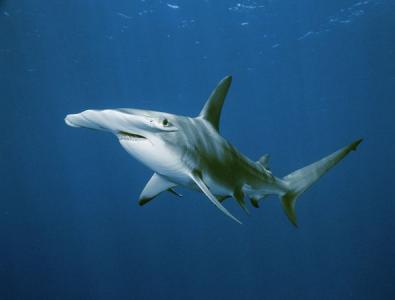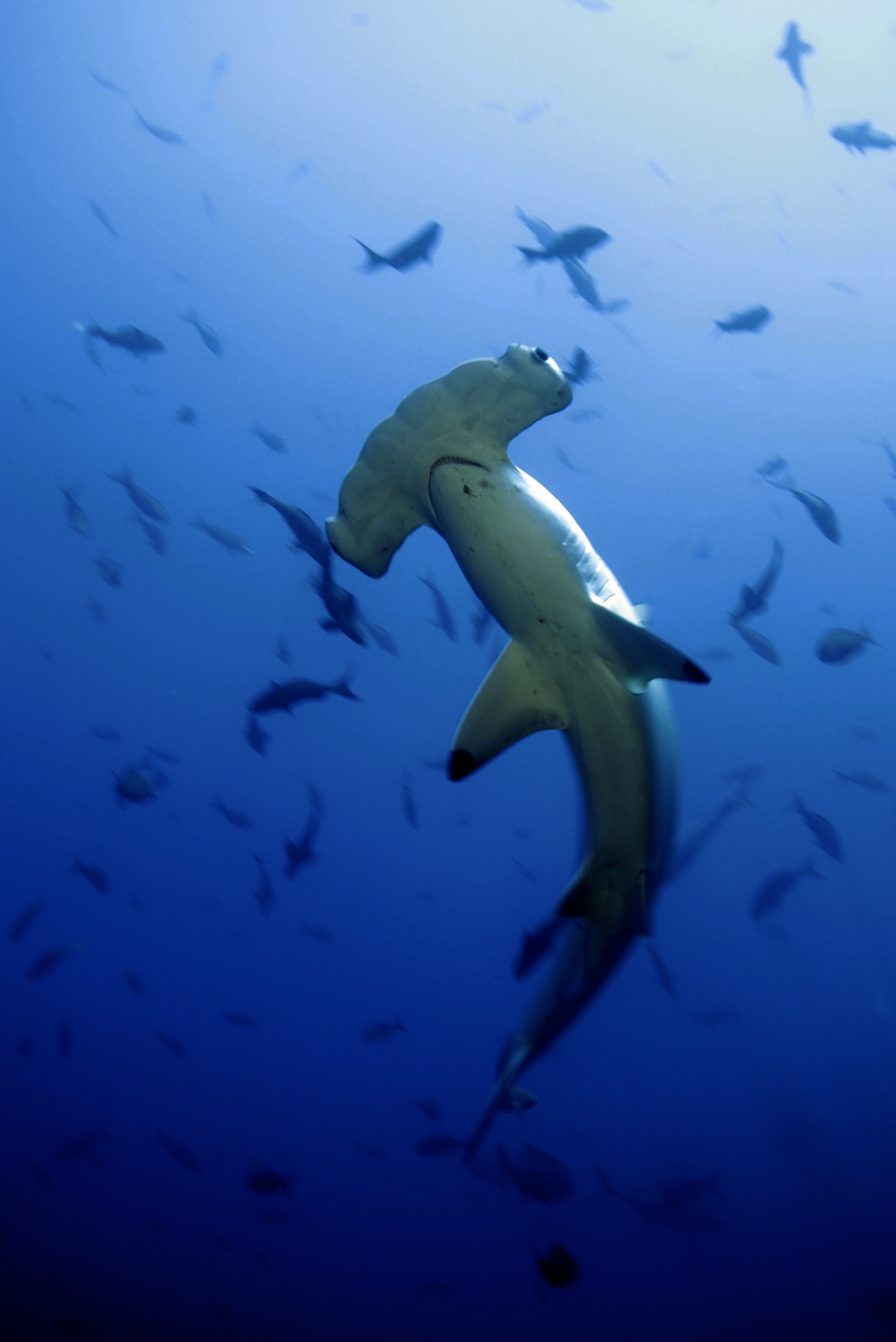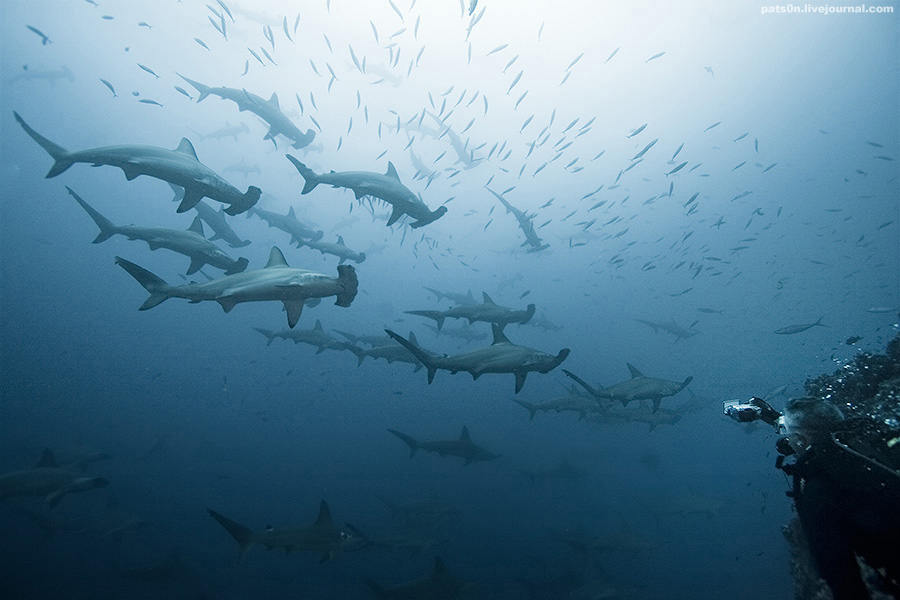Costa Rica Conservation – Sharks are an essential part of the oceans. Their presence is an indicator of the good health of an ecosystem; their absence is representative of an overfished and out of balance marine environment. Even though sharks have been traditionally vilified in movies and general media, the public is nowadays more aware of their value to sustain life in the oceans and is more proactive in asking governments for their protection.
 Costa Rica has recently promoted several initiatives oriented towards managing sharks responsibly. In 2013, the government passed a decree banning shark finning and emphasizing existing restrictions. Also in 2013, the government joined efforts with Brazil and Honduras and spearheaded the advocacy for the inclusion of hammerhead sharks in Appendix II of the Convention on International Trade in Endangered Species of Wild Fauna and Flora (CITES). In 2014, the government joined efforts with Ecuador and led the advocacy for the inclusion of hammerhead sharks in Appendix II of the Convention on the Conservation of Migratory Species of Wild Animals.
Costa Rica has recently promoted several initiatives oriented towards managing sharks responsibly. In 2013, the government passed a decree banning shark finning and emphasizing existing restrictions. Also in 2013, the government joined efforts with Brazil and Honduras and spearheaded the advocacy for the inclusion of hammerhead sharks in Appendix II of the Convention on International Trade in Endangered Species of Wild Fauna and Flora (CITES). In 2014, the government joined efforts with Ecuador and led the advocacy for the inclusion of hammerhead sharks in Appendix II of the Convention on the Conservation of Migratory Species of Wild Animals.
Recently however, the Ministry of the Environment’s decision to allow the exportation of hammerhead shark fins caused a flurry of opposition in Costa Rica. Once a species has received protection in Appendix II of CITES, any government wishing to export the said species must produce a non-detriment finding. This is an analysis of the vulnerability of the species in the country and whether allowing the exportation will be prejudicial.
In Costa Rica, the Representative Council of Scientific Authorities (CRAC-CITES in Spanish) is responsible for these non-detrimental finding evaluations. In December 2014, CRAC-CITES approved an initial request to export 411 kilograms of hammerhead fins. One of the main arguments to allow this exportation came from the National Fisheries Authority (INCOPESCA), which stated that only few hammerheads had been landed in recent years. In January 2015, based on additional information and counseling, CRAC-CITES rejected a second request for the export of 239 kilograms of hammerhead fins; however the decision was overruled by the Ministry of the Environment, which claimed “social interest.”
The argument that only few hammerhead sharks are being landed is worrisome. Any reductions in the population of an endangered species can affect its health, no matter how small. Based on the technical analysis of public information for the 2009-2014 period for both the national and international fleets, MarViva concluded that hammerhead sharks were landed in national ports every year within that period. The national fleet landed 56,428 hammerhead sharks, an average of 9,405 per year; this accounted for 1,143,781 kilograms of hammerhead carcasses and 81,877 kilograms of hammerhead fins. The international fleet landed 3,892 hammerhead sharks, an average of 649 per year; this accounted for 109,613 kilograms of carcasses and 8,844 kilograms of fins.¹
The landing of these 60,320 hammerhead sharks in the six-year period does not take into account hammerheads landed by the small-scale artisanal fleet. These fishermen work closer to shore due to the size of their boats, and their landings are not registered by the fisheries inspectors. The problem is they work in or near spawning and nursing grounds for hammerheads along the coast.
The argument in favor of fin exports based on “social interest” is very lax. During the 2009-2014 period, the reported hammerhead carcasses accounted for 3.53% of the total landed by the national fleet, while hammerhead fins accounted for 3.56% of all fins landed. The percentage of relative weight shrinks to less than 0.5% when related to the all fishery landings by the national fleet. For this analysis the international fleet was not taken into account, since there is practically zero socio-economic benefit for coastal communities from their shark landings. This small percentage represented by hammerhead sharks within Costa Rican fisheries argues against their socioeconomic importance.
Another argument used by the Ministry of the Environment to allow the exportation of hammerhead shark fins was that they had already been caught and landed; thus to throw them away would be a waste of animal protein. Yet, there is precedence for taking even more extreme measures when managing a threatened species of shark. In 2011, the Inter American Tropical Tuna Commission passed a resolution to prohibit retaining onboard, transshipping, landing, storing, selling or offering for sale any part of oceanic whitetip sharks. Costa Rica is a member of this Commission and the National Fisheries Agency (INCOPESCA) ratified this measure in 2014.
Costa Rica is looked upon as an example of conservation and sustainable use of natural resources. It is now up to us to continue this trend at sea. The CRAC-CITES is working hard to analyze existing information to produce a non-detrimental finding. This document dictates whether exportations should or should not be allowed. INCOPESCA, the Ministry of the Environment, NGOs and fishermen must work together to develop adequate management strategies, such as promoting the use of sustainable gear for catching yellowfin tuna and thus reducing fishing efforts concentrated on sharks.
These types of initiatives are possible. In 2014, the communities of Golfo Dulce gave us a little lesson in fisheries management. Golfo Dulce, in Costa Rica’s South Pacific, is a spawning and nursery ground for hammerhead sharks. They are a frequent catch in the artisanal fishermen’s bottom longlines, and are usually dead when the fishermen haul in the lines. However, juvenile hammerheads have little to no economic value in Golfo Dulce, so the fishermen proposed using thinner material on their lines that would allow the young hammerheads to break free on their own.
Sustainable use of marine resources goes hand-in-hand with social progress; better management of fisheries will benefit the livelihoods of coastal communities, provide food security and benefit ecosystems. A good friend of mine always uses an analogy when talking about hammerhead sharks. I am going to take the liberty of using it here: “We would never stand for the hunting of a jaguar on land, people would protest on the streets, why are we ok with the hunting of a hammerhead shark?” Let us work together and build the necessary framework that will allow shark populations, not just hammerheads, to rebound.
By Dr. Erick Ross Salazar of the MarViva Foundation (a Mission Blue partner)

